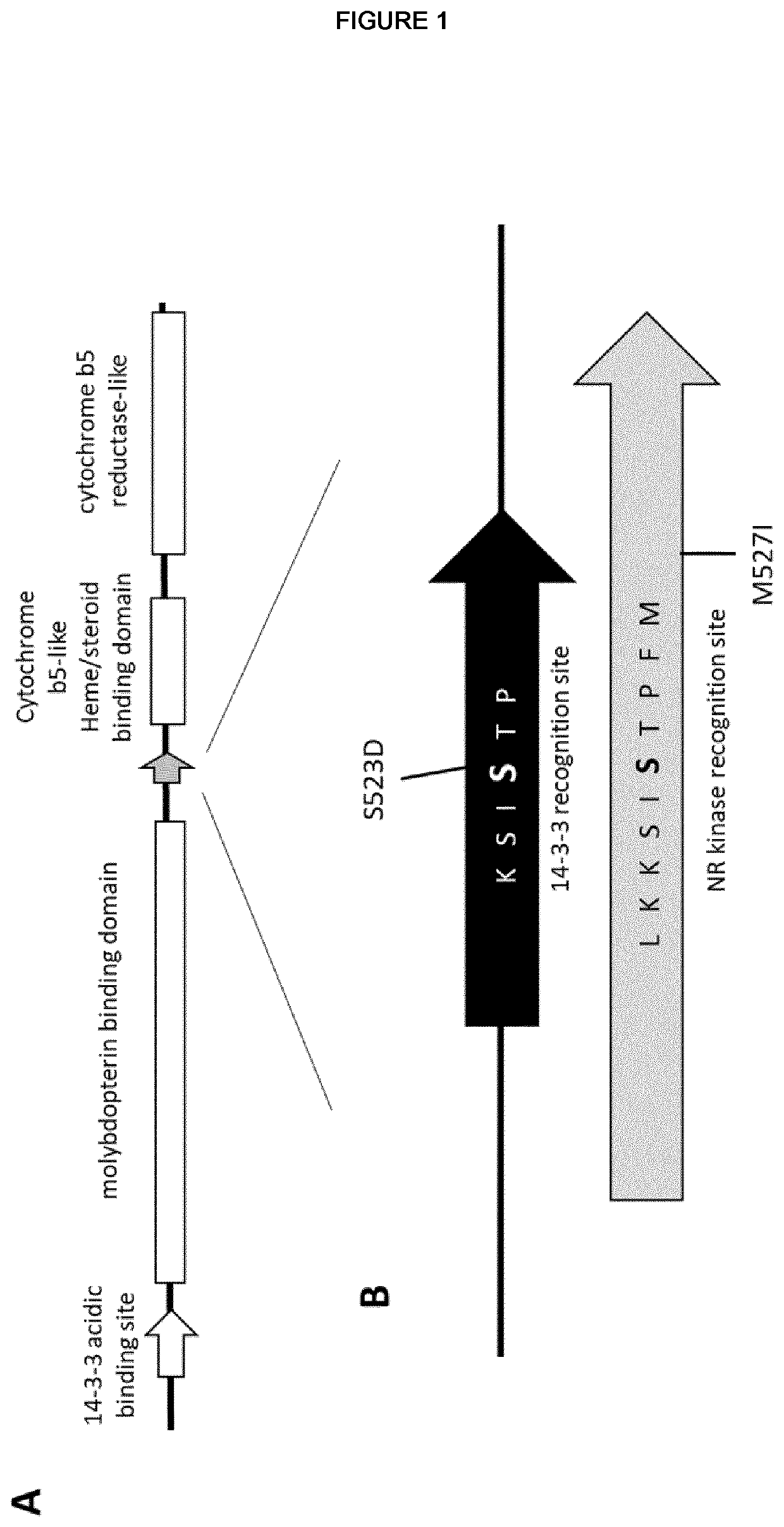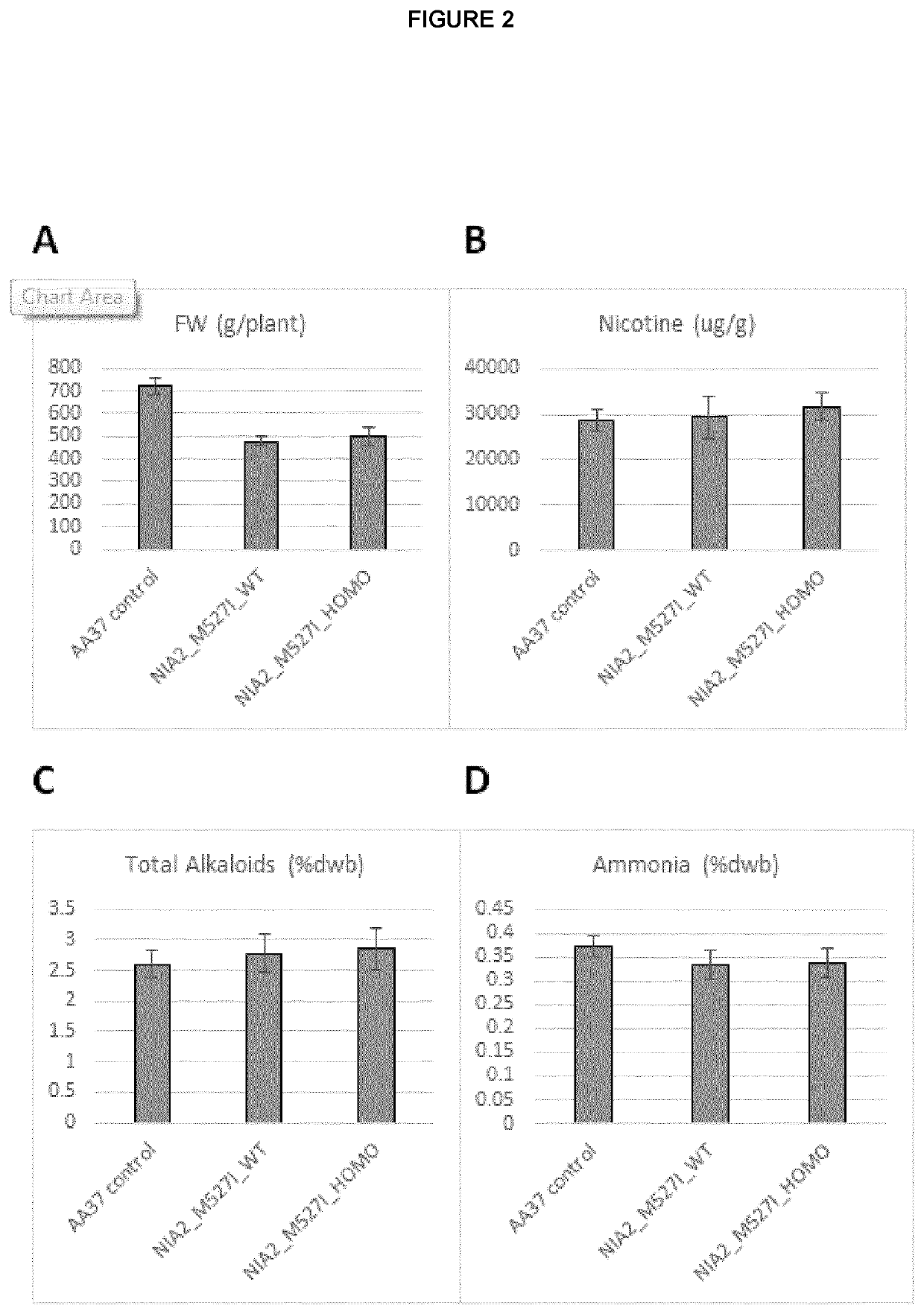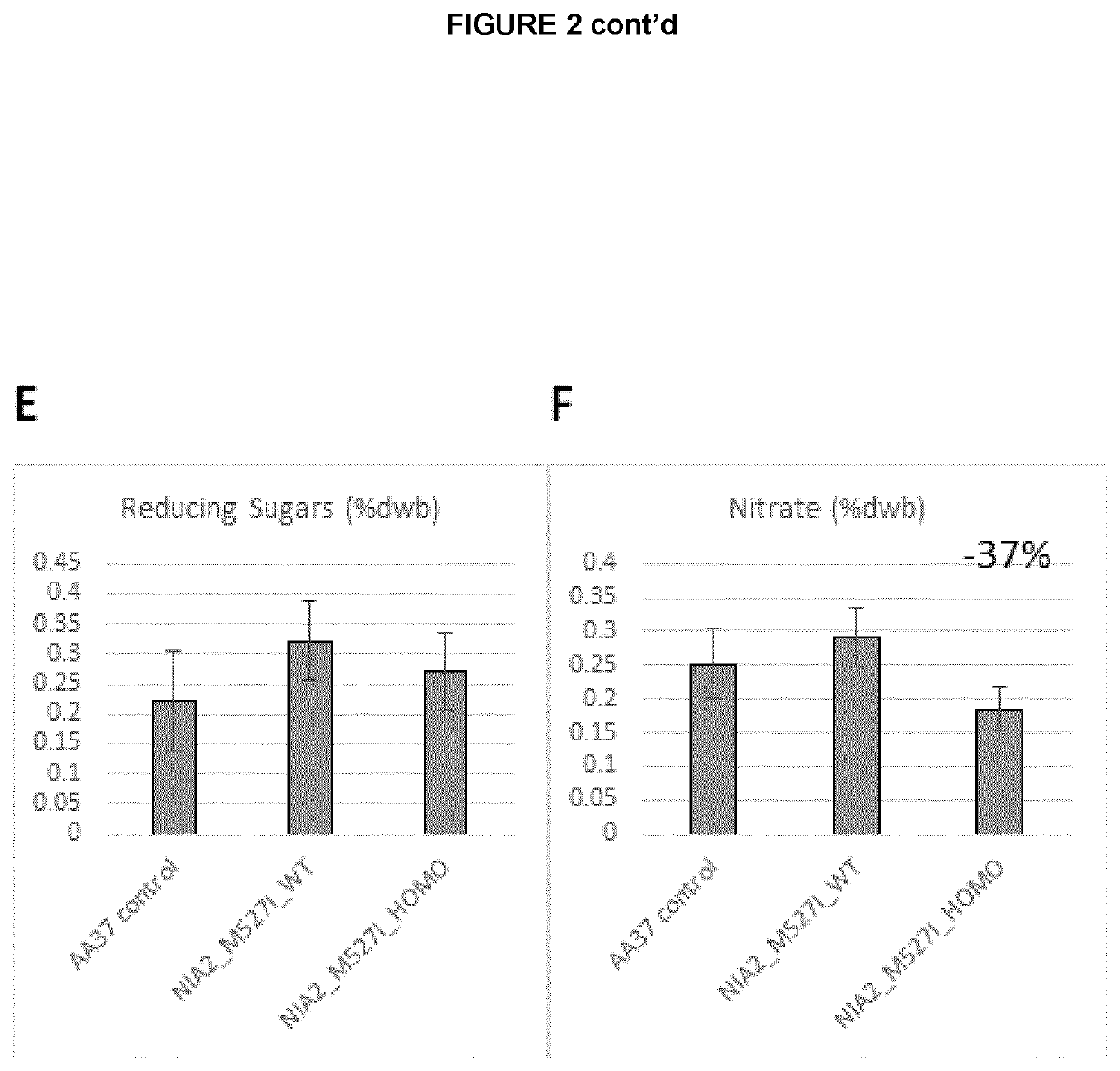Modulation of nitrate levels in plants via mutation of nitrate reductase
a technology of nitrate reductase and plant nitrate, which is applied in the field of plants, can solve the problems of low endogenous nitrite levels in plant tissues, and achieve the effect of reducing nitrate levels and improving the commercial acceptance of plants
- Summary
- Abstract
- Description
- Claims
- Application Information
AI Technical Summary
Benefits of technology
Problems solved by technology
Method used
Image
Examples
example
[0176]M0 seeds of Nicotiana tabacum AA37 are treated with ethyl-methanesulfonate (EMS) at different concentrations and exposure times, to generate a population of plants with random point mutations. A kill-curve is estimated at M1 generation for each treatment, together with lethality, fertility and rate of chimerism. M1 plants are self-fertilized to generate M2 families of seeds, to allow recessive alleles to be recovered as homozygous and lethal alleles to be recovered as heterozygous. Genomic DNA from eight M2 plants per family of the EMS mutagenised population is extracted and screened for mutants, while M2 plant material and M3 seeds are collected and stored for future analyses. To identify and characterise the mutant variants, genomic DNA samples from M2 plants are pooled in groups and screened by sequencing of targeted gene fragments. Target gene fragments are amplified using the primers specific for tobacco NIA2 gene shown in Table 2. Mutations in the target genes are retrie...
PUM
| Property | Measurement | Unit |
|---|---|---|
| Fraction | aaaaa | aaaaa |
Abstract
Description
Claims
Application Information
 Login to View More
Login to View More - R&D
- Intellectual Property
- Life Sciences
- Materials
- Tech Scout
- Unparalleled Data Quality
- Higher Quality Content
- 60% Fewer Hallucinations
Browse by: Latest US Patents, China's latest patents, Technical Efficacy Thesaurus, Application Domain, Technology Topic, Popular Technical Reports.
© 2025 PatSnap. All rights reserved.Legal|Privacy policy|Modern Slavery Act Transparency Statement|Sitemap|About US| Contact US: help@patsnap.com



